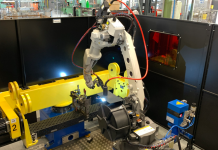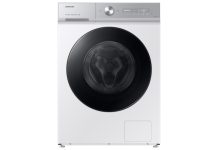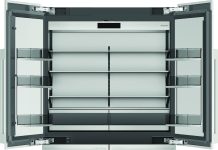Steels and non-ferrous alloys, like also polymers, ceramics and composites, are subjected to a constant upgrading of their matches, designations and properties. To speed up the search for precise and updated information, today we can avail ourselves of versatile and efficient software instrument.
Gianandrea Mazzola

It is not certainly an inedited piece of news that the last years have been harbingers of innovation from the point of view of new materials. Completely different is instead the possibility of using them in safe and concrete way in more or less complex industrial processes. Enhanced performances (let’s just consider high-strength steels), improved properties and/or new designations that must be known in-depth and mastered to be used. On the other hand, competitiveness has also imposed a race in search of alternative materials, instead of more traditional ones, to technical offices. Materials, then, for which the most correct and exhaustive information, to be acquired in the shortest possible time, becomes absolutely necessary: this can happen through the traditional browsing of technical literature (consultation manuals etc.) or availing ourselves of the resources available in net, lots of them also free of charge. But with what warranties? And with what time optimization? According to this strategy, there are some instruments purposely developed to provide updated, complete and univocal data with few clicks of the mouse; such as Key to Metals, database of materials constantly updated by the homonymous Swiss company, which can be used both in Web modality (with accesses that can be single or multiple simultaneously, also with possibility of direct accesses and without password through corporate servers), and on CD-ROM, and containing complete information about over 185,000 alloys of around thirty Countries and about sixty Regulations, with increment of materials and monthly updates.

Top-level efficiency and efficacy
In this context, the winning and driving concepts that have determined the implementation and the fast diffusion of this tool result in the great “efficiency”, that’s to say faster looking up times not comparable with the “surfing on sight” on the Net, together with the “efficacy” of the datum itself. And this is perhaps the most qualifying aspect: the data contained in Key to Metals are in fact found, selected and verified by a team of technicians exclusively entrusted with this activity according to procedures ruled by ISO Regulations. The software is then able to provide a valid solution to the following problems concerning materials: identification of an unknown Designation (Country, Regulation, Appurtenance Group); retrieval of equivalent materials worldwide (matches), search for the chemical and physical Properties; synthetic information about international Regulations (number, title, edition in use). All that stored in over 4.5 million records of data of easy and rapid access; a volume of information that can be reached in few seconds and in few clicks and that includes also a patented technology for the identification of unknown materials, using as comparative method the analysis of their chemical and/or mechanical composition to identify known similar materials.
From CAE-Fem to Chemical Analysis
A database of this type, treating chemical-physical-mechanical properties and the correspondences among international regulations, represents a theme of certain interest for all those companies (and today their number is constantly growing) oriented to export in transverse way. Quality, design, production, purchasing are the departments that can take the biggest advantage of it. In particular, the design making use of modern CAE-Fem simulation software, fully supported by the special module of Key To Metals, named “Extended Range”, which operates in combination and synergy with the Database to provide an unprecedented quantity of useful data for the structural calculations in elastic and plastic conditions (curve stress-strain, fatigue curves, fracture and creep for thousands of ferrous and non-ferrous alloys, with data that can be automatically exported). The module called SmartComp allows identifying the alloy closest to the analysed one (Country, Regulation, Designation, Matches, Properties), with data obtained from chemical analysis instruments (that’s to say spectrometers) and processed with patented algorithms.

From “metals” to “materials”
Key To Metals finally counts also the new Plus module, containing a broad range of data about the properties for polymers, ceramic and composite materials, still fully integrated into the database. In includes information for non-metal materials such as: chemical composition, mechanical and physical properties, thermal properties, electric properties, stress-strain diagrams and information about production. And the company is focusing its next product developments specifically on this optional module. The number of materials will notably increase just for the sector of polymers and composites and, besides the purely numeric growth in record terms, there will be the addition of more forefront characteristics such as stress-strain and fatigue curves. They will add then new modules dedicated to corrosion and to the properties of metals and non-metal materials; a constant update in order to provide the users with even more information for structural calculations and simulations.

PRECISE INFORMATION MAKE THE DIFFERENCE
What is the importance of the possibility of availing ourselves of a tool like Key To Metals in the sector of plastic, of ceramic, of polymers ad of composites? What the advantages and what the operational benefits in a more and more competitive market? “In addition to the time saving – specifies Viktor Pocajt, CEO of Key To Metals – much more interesting are the opportunities that the software makes available to optimize the design and the successive saving achievable thanks to the choice of alternative materials and/or suppliers; all that using cross reference tables”. In addition to millions of records that select and indicate equivalent materials, Key to Metals includes in fact a patented technology for the search of similar unknown materials, using as comparative method the analysis of their chemical and/or mechanical composition. A global platform that allows sharing the same information from whatever workstation connected with internet, which also facilitates the communication among different sectors of the company, technical offices or delocalized divisions (today increasingly diffused) of production and maintenance, especially on a world scale. “With the peculiarity – adds Pocajt – that the platform provides also a repeatability of results, then corroborating a much more precise and controlled overall process». Structured and updated with ISO certified procedures, the database can contribute in significantly reducing the risk of serious design errors, with potentially disastrous, or anyway expensive, consequences. «The fact is that mechanical and physical properties – specifies and ends Pocajt – inside a group of similar materials, but also even for the same material, can vary by a percentage exceeding 500%, while about 30% of design and/or implementation failures is ascribable to the lack of knowledge and understanding of the properties of the materials themselves”. Hence the importance of precise and updated information about the characteristics and the properties that cannot be in any way underestimated.




